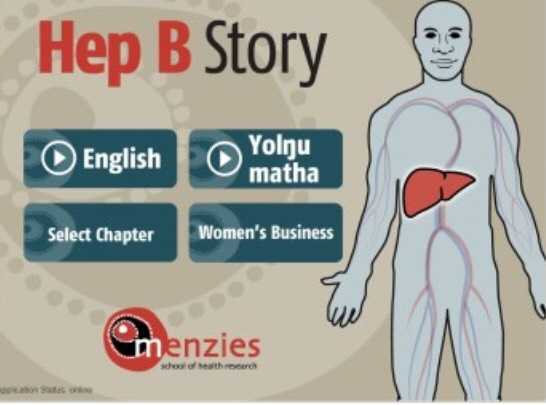” Hepatitis B is the most prevalent form of viral hepatitis worldwide. It’s also the leading cause of liver cancer. Interestingly, hepatitis B used to be known as the “Australia Antigen” as it was first discovered in Australian Aboriginal people in the 1960s.
Hepatitis B is around ten times more prevalent in Indigenous communities than in the rest of Australia. Of the nearly 240,000 Australians estimated to be living with chronic hepatitis B, over 20,000 are thought to be Indigenous people. New infections with hepatitis B remain three times as common in Indigenous people as in non-Indigenous Australians.”
Dr G. Yunupingu’s legacy: it’s time to get rid of chronic hepatitis B in Indigenous Australia
” By making information about HBV accessible and available in first languages, we can improve community health literacy.
This will help people better understand the disease, setting the groundwork for us to work towards eliminating chronic HBV in the NT, by 2023.
“There are just over 4,000 Territorians with HBV, but not all of them understand why they need blood tests or vaccinations.”
Menzies researcher, Dr Jane Davies.
The app is currently available in English and Yolngu matha, but in the near future it will also include translations into Kriol, Arrernte, Murrinh-Patha, Pitjantjatjara, Warlpiri, Tiwi, Kunwinjku, Anindilyakwa, Burarra and Gurindji.
The Hep B story is a visual, interactive app in English and Yolŋu matha designed for patients living with chronic hepatitis B (hep B) and their families. It tells the story of the hep B virus, how you get it, what happens over time, how you know you have it as well as details about immunisation and treatment (including a game). There is also a separate women’s section dealing with mother to child transmission and ways to prevent it.
Menzies School of Health Research (Menzies) is doing its part to ensure more Indigenous people living in the Northern Territory have access to potentially life-saving information about hepatitis B (HBV) this World Hepatitis Day.
The Menzies HBV research team estimates more than 70 per cent of Indigenous Territorians will benefit from learning about HBV in their first language as the Hep B Story app will be translated into 10 additional Indigenous languages.
The theme for this year’s World Hepatitis Day is ‘Finding the Missing Millions’, which is in line with Menzies’ goal of providing people vulnerable to the virus culturally-appropriate information through the National Health and Medical Research Council (NHMRC) funded Hep B PAST research collaboration.
Together with partners, including the Northern Territory Government, Miwatj Aboriginal Corporation, Katherine West Health Board, Australasian Society for HIV, Viral Hepatitis and Sexual Health Medicine and the NT AIDS and Hepatitis Council, Menzies is developing a NT HBV clinical registry.
This collaboration will enable appropriate HBV care to be delivered to those who need it in a systematic and sustainable way.
The Hep B Story app was developed by Menzies in 2014. It provides information about how HBV is contracted, as well as symptoms, treatments and immunisation.
ACCHO Activity Other ways to reduce infections
An example of innovative care has been operating in Dr G. Yunupingu’s home community of Galiwin’ku for over five years. Under the management of Miwatj Health, an Aboriginal community-controlled health organisation, a hepatitis specialist visits regularly three to four times per year.
The specialist brings necessary diagnostic equipment and effectively provides a “one-stop shop” for individuals living with hepatitis B in Galiwin’ku. Just as importantly, a local healthcare practitioner champions the cause of hepatitis B treatment and elimination. Those infected are contacted and encouraged to see the specialist team.
Several other regions in the world with large Indigenous populations and high hepatitis B prevalence, such as Alaska and New Zealand, have developed programs to test most of the population and identify those with hepatitis B infections. Affected individuals are offered regular follow-up and care to prevent cirrhosis and liver cancer.
When delivering such care to Indigenous communities, it’s essential to develop trust and ensure culturally appropriate approaches. Also important is partnering with communities and their health workers to develop new ways of building awareness of hepatitis B as an important health issue.
With comprehensive public health initiatives, long-term commitment to funding and policy – including significant workforce development to ensure as many people as possible are tested and appropriately followed up – the impact of hepatitis B on Indigenous communities can be eliminated.

